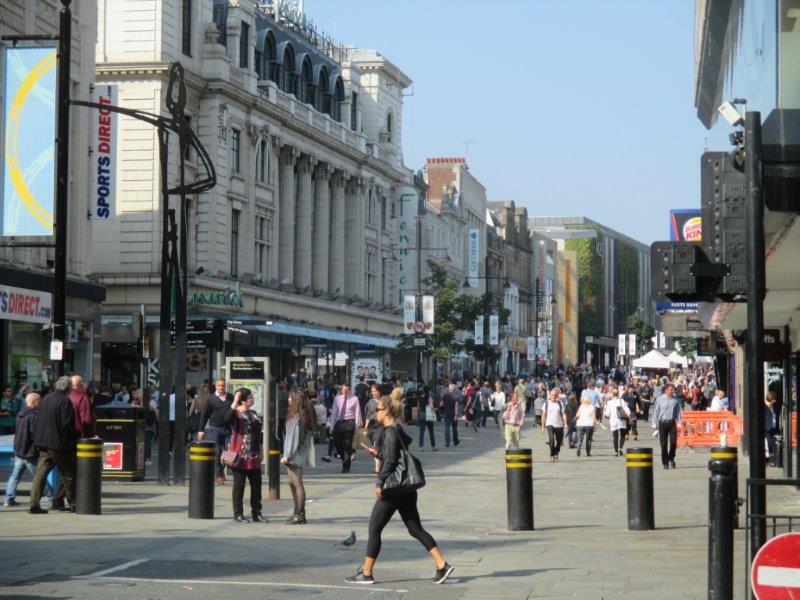

Lichfields Senior Director Jonathan Wallace
One of Developing Consensus’ key focuses is to enable the North East and its towns and cities to thrive. With this in mind, Lichfields Senior Director Jonathan Wallace, comments on the widespread closure of stores across UK high-streets and highlights why this doesn’t necessarily mean doom and gloom for the future of our town centres.
The struggle of retailers in our town centres is hard to ignore. Debenhams, Arcadia and Boots have all announced store closures across the UK in recent months, a trend which shows no signs of slowing down. Couple this with a barrage of media reports predicting even more bad news to come, along with the shifting market resulting in tumbling rents and values, rising yields and most visibly an increase in vacancies. It doesn’t paint a very positive picture.
This was something fresh in my mind as I chaired a Royal Town Planning Institute (RTPI) seminar last month on ‘Town Centre Futures’. Truth be told, I had my concerns that it could turn out to be a rather downbeat event with much discussion about the issues town centres are facing and the wider economic uncertainty. However, this wasn’t the case.
Thanks to a series of positive presentations and engaging speakers, it was confirmed to me that town centres do indeed have a future, albeit in a different guise and offering a completely different role to towns and their inhabitants.
Of course, it was identified that a number of factors had played a part in the current crisis faced on the UK high-street. This included:
- The advancement of technology which has aided the growth in online shopping
- The greater customer focus on convenience
- A decline in customer loyalty
- An increased interest in experiences in preference to material goods
Also, the growth of online shopping was naturally discussed highlighting that the growth of the sector is set to continue for at least the next decade.
With this in mind however, there were still many positives points to note. Despite the doom and gloom, many sectors are still growing. While retail demand has fallen, there is increased demand in many centres for pubs, bars, gyms, hair and beauty services and dentists – services that cannot be accessed online. Some of these were previously priced out of town centres, but are now taking the opportunity to acquire a central space for their business. Furthermore, there are retailers – such as Primark for example – that are continuing to thrive and take more retail space.
Another key point was that multi-channel retailing should be seen as an opportunity, not a threat. Many stores have introduced click and collect options, embracing digital technology and bringing new customers into town centre environments. Social media is also a valuable and cost-effective tool that town centre businesses can use to promote in-store offers and visitor experience.
With this in mind, it was highlighted that town centres need to be customer-focused. Factors like toilet provision, perceptions of safety, cleanliness, lighting, disabled access, evening opening hours, accessibility and parking all make a big difference and encourage individuals to venture into the town centre.
Local authorities have a role to play in this. Whether through business support, car parking, planning policy strategies or development management decisions. A collaborative approach alongside businesses within the town is needed to increase footfall and demand. A key example of this would be Newcastle businesses and the NE1 scheme which brings in an average of 340,000 people into the town centre every year.
There are a range of planning tools available to support town centres. Planning policy has a role to play and, while national planning policy as set down in the NPPF appears unlikely to be tightened in the near future, there are many existing planning tools which LPA’s can use to support and regenerate town centres. Compulsory purchase powers, Local Development Orders, Neighbourhood Development Orders, Area Action Plans, Supplementary Planning Documents, Business Improvement Districts, Heritage Action Zones and Development Corporations provide local authorities with a multitude of different options, which are not currently being fully explored.
Town centres remain an important element in our economies. According to the most recent ONS data the retail sector employs 2.5m people in England, only the healthcare sector employs more people nationally. Therefore from an economic perspective, the health and growth of our town centres is crucial.
Here in the North East, Lichfields most recently took part in a research project partnering with the North East Chamber of Commerce (NECC.) This project developed a series of recommendations to help town centres ensure their future roles, based on research and examples of best practice, focused around workshops with key stakeholders in five city/town centres. This can be viewed here.
To summarise, our town centres do have a future but will look different from the way they look now. They will offer less retail floor space, but also a wider range of other uses including a stronger independent offer, and they will be supported by increased footfall from office workers and new residential communities. To be successful our town centres need to be relevant to the communities they serve – and they will need a lot more love than we show them now.
To read more from Jonathan and Lichfields. Visit the award-winning Lichfields’ blog Planning Matters here.
